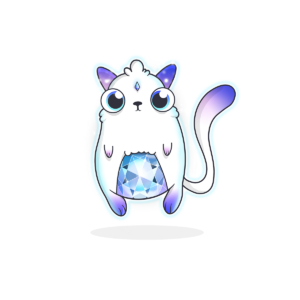The NFT space offers plenty of new opportunities for creators, but there are a few things you should know before getting started.
Key Takeaways
- NFTs are digital assets representing real-world assets like images, photographs, videos, gifs, memes, and gaming items
- NFTs use blockchain technology and smart contracts for security and transferability
- NFTs can be created in NFT marketplaces like OpenSea, Rarible, and SuperRare
- NFTs can be sold in NFT marketplaces like Binance NFT, OpenSea, and Rarible
- Different NFT minting platforms feature different minting fees
- A profitable NFT project needs a good community
- NFTs are yet to get a legal definition in any country in the world
NFTs are gaining ground faster than anyone could have predicted. Especially in the art world.
According to Tokenized, total net sales volume from NFTs was nearly $25 billion in 2021 and about 28.6 million different wallets traded NFTs in 2021. The overall market grew by more than 26,000% versus 2020.
NFTs represent a massive opportunity for digital artists and creators.
In this post, we’ll walk through 10 things every digital artist needs to understand before they start selling their work on the blockchain:
1
What are NFTs?
Simply put, NFTs are digital assets that exist on a blockchain.
They’re unique assets that can have only one owner at a time.
NFTs are much more than digital apes, cats, or pixel art; they can be pretty much anything. Think video, audio, music, tickets, tweets, pictures, memes, gifs, gaming items and more.
Can anyone can create an NFT?
Pretty much. For example check out Weird Whales, a popular NFT collection created by a twelve-year-old programmer called Benyamin from London, UK.

Creature World is another popular NFT collection created by the 21-year-old visual artist Danny Cole.

2
How do NFTs work?
NFTs, like cryptocurrencies, rely on blockchain technology for security, immutability, and to prove their authenticity. Thanks to blockchain’s transparency anyone can check the authenticity of an NFT.
Each time an NFT is created (minted), it’s permanently recorded on the blockchain and timestamped. This way anyone who buys the NFT can prove who created it and that it’s genuine. The entire history of ownership of every NFT will live on the blockchain.
Not all blockchains support NFTs.
Some of the top blockchains that support NFTs include:
- Ethereum
- Binance Smart Chain
- Cardano
- Solana
- Tezos
- Tron
The Ethereum blockchain is by far the most widely used.
OpenSea, Rarible, Nifty Gateway, KnownOrigin, and SuperRare are top NFT marketplaces that were created on Ethereum.
Cryptokitties and Cryptopunks are popular NFTs that were developed on the Ethereum blockchain.
| Crypto Kittie 1 | CryptoPunk | Bored Ape Yacht Club |
|---|---|---|
|
|
 |
 |
The 1st (genesis) NFTs from each NFT collection.
3
What are the Risks?
NFTs have a lot of pros. They also have a few risks.
First, they are still in their nascent stage. And while some people have embraced them, many are still not convinced.
Secondly, it is not easy to determine the actual value of an NFT. Some of the things that help determine the value of an NFT include creative and unique design, scarcity of the NFTs, and the number of buyers and sellers. In the end, it all comes down to how much a buyer is willing to pay for the NFT.
Thirdly, NFTs rely on smart contracts for transferability and security. Any security flaw on a smart contract could be detrimental.
In 2021 hackers took advantage of a smart contract vulnerability of the Poly network and made away with almost $600 million worth of crypto coins. (The hacker returned the stolen funds in this case.)
4
Where to Mint NFTs
Minting is the act of creating an NFT and adding it to the blockchain.
There are several platforms where you can mint your first or several NFTs. Different NFT minting platforms offer the service differently. Some research will help you find a platform that’s a good fit for your NFT.
Some of the best places you can mint your NFTs include OpenSea, Rarible, Binance NFT, Nifty Gateway, and Async Art.
OpenSea is a popular NFT marketplace that supports a wide variety of digital assets, over a dozen wallets, and several blockchains including Polygon, Klatyn, and Ethereum.
Rarible is a great option if the plan is to sell NFTs focusing on art and photography. Like OpenSea, it supports several blockchains including Ethereum, Flows, and Tezos.
Rarible is a great option if the plan is to sell NFTs focusing on art and photography. Like OpenSea, it supports several blockchains including Ethereum, Flows, and Tezos.
Binance NFT stands out as an NFT marketplace leveraging the Binance ecosystem. Integrating with the Binance ecosystem means the platform benefits from great security. Users can use the Binance smart chain and Ethereum blockchain to create NFTs.
Nifty Gateway is perfect for premium NFT work. The platform is responsible for some of the most expensive early NFT sales. Most celebrities buy their NFTs from it. Async Art only supports NFT creation on the Ethereum blockchain. It focuses primarily on programmable art.
Other NFT marketplaces include:
5
How to sell NFTs
Most platforms that allow NFT creation also allow you to sell your NFTs. You can sell your NFTs on OpenSea, Rarible, Mintable, Binance NFT, and Nifty Gateway.
On OpenSea, once you’ve created your NFT you can list it for sale. On your account page select your profile image at the top right corner to reveal the profile option. Click “Profile” to be taken to your NFT collection where you can select the NFT you wish to sell.
Once you’ve selected the NFT you want to sell click on “Sell” to be taken to the listing page. On the listing page, you have the option of selling your NFT either with a fixed price or a timed auction. You also have the option of setting the duration for your NFT sale or reserving the NFT for a specific buyer.
Fees
At the bottom of the page are the fees associated with the sale. OpenSea charges a 2.5% service fee on all sales and a 10% royalty fee payable to the original creator of an NFT.
The final step will be signing a transaction on your wallet to confirm the sale. As a first-time NFT seller on OpenSea, you’ll be required to initialize your wallet to continue.
Note: If you imported your NFT from an external marketplace to sell it on OpenSea you’ll have to undergo an extra confirmation to permit OpenSea to sell your NFT on your behalf.
6
You’ll need to set up and connect a crypto wallet. (MetaMask)
You know you need a crypto wallet to create and sell your NFT.
FYI your crypto wallet does not store your NFTs. It stores your Private Keys which allow you to access and manage your crypto funds. You need cryptocurrencies to create and sell your NFTs.
Different NFT creation platforms support different crypto wallets but most NFT marketplaces work with MetaMask and we recommend it.
OpenSea supports lots of crypto wallets including:
MetaMask, Coinbase wallet, Trust Wallet, Portis, Fortmatic, Arkane, Authereum, and many more. Rarible supports MetaMask, Fortmatic, Walletconnect, Walletlink, and MyEtherwallet.
SuperRare supports MetaMask and Fortmatic crypto wallets.
Foundation only supports MetaMask.
Read: How to set up a Metamask Ethereum wallet: A Guide for Dummies
MetaMask can be downloaded from its official website. It is free. It’s compatible with Google Chrome, Firefox, Brave, and Edge. It’s available as an app available on iOS and Android devices.
7
Expect to pay minting fees.
The minting fee is the money you pay to create your NFT.
Different platforms charge different minting fees depending on the blockchain.
OpenSea requires users to pay two fees for their first listing.
The first fee is to initialize your account to start selling your NFTs on the platform. It ranges between $70 and $300. This is a one-time thing.
The second fee allows OpenSea access to your NFT items when a sale occurs. It’s around $10 to $30.
Binance NFT charges a 0.000001BNB minting fee for any NFT created on the Binance Smart Chain. You’ll also have to part with a 1% service for fee selling or buying NFTs from the platform. BNB is the utility token of the Binance exchange. It is used to pay for fees on the platform.
Rarible has a “lazy minting” feature that allows NFT creators to create NFTs for free. There is, however, a 2.5% service fee for both NFT buyers and sellers.
Note: minting fees change depending on a crypto coin’s current price. A platform’s NFT minting fees today may not be the same tomorrow.
Related: Ethereum Gas Fees explained
8
How and where to sell NFTs
Most platforms that allow NFT creation also allow you to sell your NFTs. You can sell your NFTs on OpenSea, Rarible, Mintable, Binance NFT, and Nifty Gateway.
On OpenSea, once you’ve created your NFT you can list it for sale. On your account page select your profile image at the top right corner to reveal the profile option. Click “Profile” to be taken to your NFT collection where you can select the NFT you wish to sell.
Once you’ve selected the NFT you want to sell click on “Sell” to be taken to the listing page. On the listing page, you have the option of selling your NFT either with a fixed price or a timed auction. You also have the option of setting the duration for your NFT sale or reserving the NFT for a specific buyer.
Fees
At the bottom of the page are the fees associated with the sale. OpenSea charges a 2.5% service fee on all sales and a 10% royalty fee payable to the original creator of an NFT.
The final step will be signing a transaction on your wallet to confirm the sale. As a first-time NFT seller on OpenSea, you’ll be required to initialize your wallet to continue.
Note: If you imported your NFT from an external marketplace to sell it on OpenSea you’ll have to undergo an extra confirmation to permit OpenSea to sell your NFT on your behalf.
9
Your NFT needs a community.
As great as your digital art or music may be, selling them as an NFT is an impossible task if no one knows about them.
For your NFTs to earn something, people need to know about them and be interested enough to buy them.
Your NFTs need a community to get the attention they deserve. You want people talking about your NFT projects for them to grow and build interest. You want buyers to have your work on their radar.
An enthusiastic community serves as the best supporter of social media and beyond. Organic support is especially essential for new NFT projects. An active community encourages new members to engage by explaining different features and answering questions on social channels.
You should ideally get as many people as possible talking about your NFTs before they drop. You can use Twitter, Facebook, Telegram, and Discord to promote and explain your NFTs.
The more people talk about your NFTs, the better your chances of earning from them.
10
Legality of NFTs
NFTs, like cryptocurrencies, operate in a highly unregulated space.
As of writing (April 2022), there are no direct state regulatory guidelines for NFTs, but some states have legislation that allows NFTs to be under their jurisdiction.
Blockchain and smart contracts continue to prove ownership of created NFTs. Without clearly defined NFT laws, some Intellectual Property lawyers continue to argue that NFTs are not subject to IP rights.
The increase in popularity and adoption of NFTs is likely to lead to some laws being made to help regulate the space. Regulations will go a long way in managing scammers and also help clear whether NFTs are securities as many continue to claim.
Conclusion
The NFT market offers plenty of opportunities for artists.
Besides allowing you to prove ownership of their work it also offers one of the best ways to earn from it.
You need to be smart to benefit from the NFT space. You also need to decide where to create them, how to create them, and where to sell them.
When choosing an NFT marketplace, consider the ease of use and the fees.
You have the choice of creating, saving or selling your NFTs. If your plan is to sell NFTs, try to build a strong and engaged community around your work. Your community will help support and promote your NFT and help it succeed.




